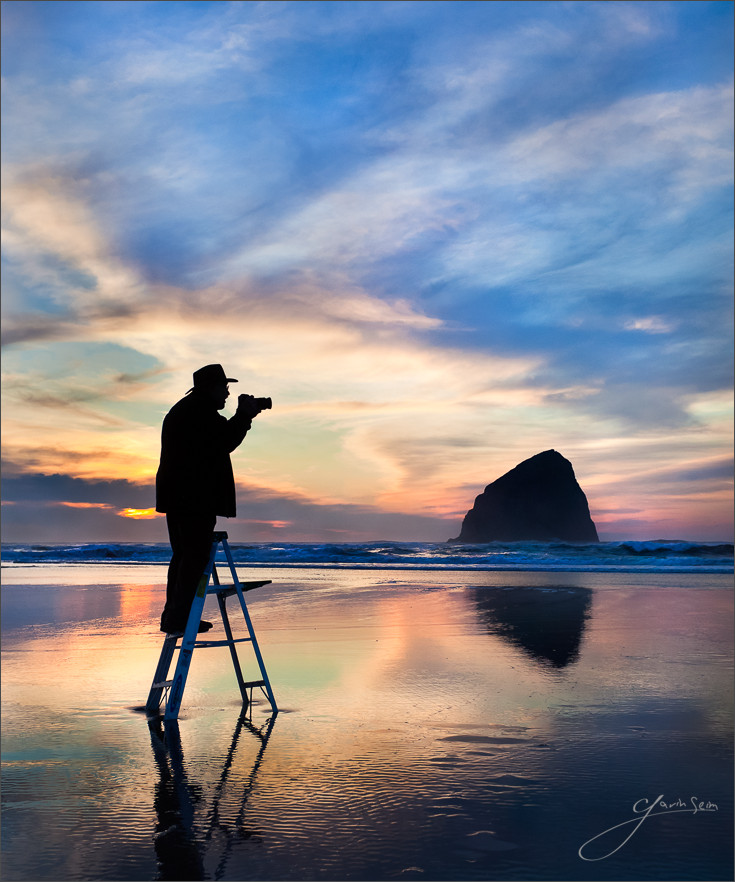
I’ve realized why these poor images are often even worse than snapshots: A snapshot is not pretending to be something artistic, creative, or edgy. It’s role is simply to be a memory, and it fulfills that role quite well.
I post this to remind those with experience to make sure we’re offering quality to our our clients. We are supposed to produce art they will want to keep, but I see and endless stream of bad images. Sometimes so-called professional images are so bad that a child could do better. People are pointing cameras and thinking they will do the work for them.
We cannot simply pull ideas for posing, lighting and composition out of thin air, with no aesthetic understanding of our subject. That is like builders throwing hammers at a pile of wood and expecting a mansion to appear. I see mothers who look fat, babies who look like Oompa Loompas, kids who look angry and dads who look like slobs because someone who was poor at their craft propped them up like badly drawn cartoon characters.
I love helping people learn. I’m not posting this to be hurtful, just to be real. It’s important that we’re honest with ourselves and clients. A doctor does not open their practice until they’re trained. A carpenter that opens a home improvement business without knowing how to improve homes is doomed to failure. Digital has not made great photography easier. It’s only made taking pictures easier.
These days it’s not easy, no matter how much experience you have. But some the best advice I can give to people starting out is don’t become a professional photographer until you are professional level. Having that camera means nothing. I’m not defining exactly when you become experienced enough. For most of us, it takes years, just like it does to become a doctor, a carpenter or just about anything else. You learn the basics first. Then it becomes your job and you keep learning.
This applies to all fields. A person should not be in business until they can make the product they claim they can. They should not have a website with prices offering services they are not qualified to give. They should not claim the title of those who spend years and decades mastering a craft, when they have no experience in that craft. There are different levels of professionalism and we don’t need to be perfect to go pro. But we do need to actually be photographers before we call ourselves photographers. We need to know the fundamentals of how to make quality images of whatever our subject might be.
If you don’t know the difference between f16, ISO800 or 1/160th, if have no idea how to light a 3:1 ratio or how to key strobes for a blue sky at noon, if you don’t know how to make your subject sharp enough for a thirty inch print, how to pose a woman so she feels beautiful and a man so he feels strong, if you don’t know what to do with the clutter in the background or how to compensate your exposure value, chances are you’re not ready to be a photographer professionally – There’s nothing wrong with that. There’s nothing wrong with snapshots. There’s nothing wrong with being an amateur. You’re learning and that’s just fine. Keep at it. If you want to call yourself a photographer, take the time to learn how first.
You don’t start as a photographer. You start learning to become one – Gavin Seim
Further Reading…
- Five Essential Elements to Mastering Photography
- Exposing with the Zone System
- Six Keys of Image Quality
- EXposed Workshop
- PHOTOGRAPHICS FILM









